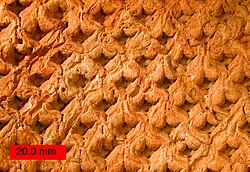| Lycophyte | |
|---|---|
 | |
| Collage of modern lycophytes. Upper left: Lycopodium clavatum (Lycopodiales, Lycopodioideae) Lower left: Huperzia serrata (Lycopodiales, Huperzioideae) Top right: Isoetes japonica (Isoetales) Right centre: Selaginella tamariscina Lower right: Selaginella remotifolia Selaginellales | |
| Scientific classification | |
| Kingdom: | Plantae |
| Clade: | Tracheophytes |
| Clade: | Lycophytes |
| Classes | |
| |
The lycophytes, when broadly circumscribed, are a group of vascular plants that include the clubmosses. They are sometimes placed in a division Lycopodiophyta or Lycophyta or in a subdivision Lycopodiophytina. They are one of the oldest lineages of extant (living) vascular plants; the group contains extinct plants that have been dated from the Silurian (ca. 425 million years ago). [2] [3] Lycophytes were some of the dominating plant species of the Carboniferous period, and included the tree-like Lepidodendrales, some of which grew over 40 metres (130 ft) in height, although extant lycophytes are relatively small plants. [4]
Contents
- Description
- Taxonomy
- Classification
- Phylogeny
- Evolution of microphylls
- Gallery
- References
- External links
The scientific names and the informal English names used for this group of plants are ambiguous. For example, "Lycopodiophyta" and the shorter "Lycophyta" as well as the informal "lycophyte" may be used to include the extinct zosterophylls or to exclude them.












